 W
WThe 1st Commonwealth Division was the name given, after July 1951, to Commonwealth land forces in the Korean War. The division was a multinational unit that was part of British Commonwealth Forces Korea, and whilst British, Canadian Army and Australian infantry units formed the bulk of the division, New Zealand artillery and an Indian medical unit were also a part of the division. As with the US "KATUSA" programme, numerous South Korean troops were seconded to the Commonwealth division to make up numbers under a programme known as "KATCOM".
 W
W7th Heavy Anti-Aircraft Regiment, Royal Artillery was an air defence unit of the British Army that served in the Siege of Malta during World War II. It fired the first British shots in the Mediterranean Theatre in the war, and provided the basis on which the heavy anti-aircraft defences of Malta were built. Late in the war it returned to defend the UK against V-1 flying bombs, and continued in the postwar army until 1954.
 W
WThe 44th Infantry Division was a division of the United States Army National Guard from October 1920 to November 1945, when it was inactivated after Federal Service during World War II. A second 44th Infantry Division existed in the Illinois Army National Guard from 1946 until October 1954, when that division was disbanded after federal service during the Korean War.
 W
WThe 65th Air Division is an inactive United States Air Force organization. Its last assignment was with United States Air Forces in Europe, assigned to Seventeenth Air Force, being stationed at Lindsey Air Station, Germany. It was inactivated on 30 June 1991.
 W
W51st (London) Heavy Anti-Aircraft Regiment was a volunteer air defence unit of Britain's Territorial Army from 1922 until 1955. During World War II it served in Norway, The Blitz, North Africa, and finally in Italy until the end of the war in Europe, by which time a proportion of the regiment's personnel were African soldiers, and the guns were engaging ground targets rather than aircraft.
 W
W7th Heavy Anti-Aircraft Regiment, Royal Artillery was an air defence unit of the British Army that served in the Siege of Malta during World War II. It fired the first British shots in the Mediterranean Theatre in the war, and provided the basis on which the heavy anti-aircraft defences of Malta were built. Late in the war it returned to defend the UK against V-1 flying bombs, and continued in the postwar army until 1954.
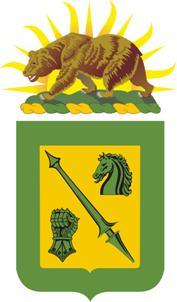 W
WThe 111th Armored Cavalry Regiment was a light armored cavalry regiment that was part of the California Army National Guard, briefly active during the early years of the Cold War.
 W
WThe 224th Infantry Regiment was a regiment of the United States Army. It was formed in 1946 from the 3rd Battalion of the 185th Infantry of the California National Guard. The regiment was part of the 40th Infantry Division during wartime and a unit of the California National Guard during peacetime.
 W
WThe 6th County of London Brigade, Royal Field Artillery, was a new unit formed when Britain's Territorial Force was created in 1908. Its origin lay in Artillery Volunteer Corps formed in the Surrey suburbs of South London in the 1860s, which had later been incorporated into a larger London unit. Together with its wartime duplicate it served on the Western Front, at Salonika and in Palestine during World War I. Converted to the anti-tank role just before World War II it saw widely varied service during the war, while its duplicate regiment landed on D-Day. The regiment continued in the postwar Territorial Army until 1961.
 W
WThe Clyde Royal Garrison Artillery and its successors were Scottish part-time coast defence units of the British Army from 1910 to 1967. Although they unit saw no active service, they supplied trained gunners to siege batteries engaged on the Western Front during World War I.
 W
W54th Heavy Anti-Aircraft Regiment was a volunteer air defence unit of Britain's Territorial Army from 1922 until 1954. In World War II it defended London during The Blitz and later served in the Middle East.
 W
W94th Heavy Anti-Aircraft Regiment, Royal Artillery, was a Scottish air defence unit of Britain's Territorial Army (TA) formed around Edinburgh during the period of international tension leading up to the outbreak of World War II. It defended Eastern Scotland during the early part of the war and then served in the North African Campaign. The regiment continued in the postwar TA until amalgamated in 1955
 W
WThe 5th Battalion, King's Own Yorkshire Light Infantry, was a unit of Britain's Territorial Force formed in 1908 from Volunteer units originally raised in the West Riding of Yorkshire in 1860. It served in some of the bitterest fighting on the Western Front during World War I, leading the attack at the tank battle of Cambrai and defending Bucquoy in March 1918. In the late 1930s, the battalion was converted to air defence in which role it served during World War II in the Battle of France and the Dunkirk evacuation, in North Africa including the Second Battle of El Alamein, and in the Allied invasions of Sicily and Italy, including service in the rebellion in Greece. Postwar, its successor units served in Anti-Aircraft Command until 1955.
 W
W667th Heavy Anti-Aircraft Regiment, Royal Artillery (Hampshire) TA was a volunteer air defence unit of Britain's Territorial Army from 1947 until 1954.
 W
WThe 1st Devonshire Artillery Volunteers and its successor units served in the British Army's Reserve Forces from 1859 to 1961. During World War I it carried out garrison duty in British India but went on to see active service in the Third Anglo-Afghan War. Converting to an air defence role before World War II its units participated in the Norwegian campaign and the Dunkirk evacuation, the Battle of Britain and then the campaigns in North Africa, Italy, and Burma
 W
WThe East Riding Royal Garrison Artillery (ERRGA) was a part-time unit of Britain's Royal Artillery based at Hull in the East Riding of Yorkshire. It provided coastal defence artillery along the Humber Estuary from 1908 to 1956, manned siege batteries on the Western Front during World War I at the Somme and Ypres and played a role in the pursuit of the German army during the Hundred Days Offensive. It served as infantry in Allied-occupied Germany after World War II. Its successor units in the Territorial Army included anti-aircraft artillery and field engineers.
 W
W850 Squadron was a short-lived Royal Australian Navy Fleet Air Arm fighter squadron. 850 Squadron was formed at HMAS Albatross on 12 January 1953. Equipped with Hawker Sea Fury aircraft, the Squadron was embarked on HMAS Sydney during her post- Korean War patrol of Korean waters in 1953. It operated briefly out of Hong Kong before returning to Australia in early 1954 where it embarked aboard HMAS Vengeance for a short period. It was then was disbanded on 3 August 1954.
 W
W870 Naval Air Squadron, also known as VF-870, was a squadron of the Royal Canadian Navy (RCN). It was formed when 803 Naval Air Squadron of the Royal Navy was renumbered to 870 NAS on 1 May 1951. It operated throughout the 1950s and early 1960s before disbanding on 7 September 1962. It was the first RCN squadron to operate jet aircraft.
 W
WThe 345th Bombardment Group is an inactive United States Air Force unit. Its last assignment was with the Tactical Air Command at Langley Air Force Base, Virginia, where it was inactivated on 25 June 1959.
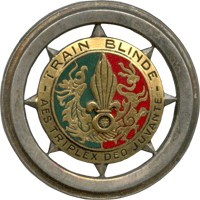 W
WThe Armoured Train of the Foreign Legion was an Armoured train detachment of the French Foreign Legion formed in Tonkin. In 1948, the 2nd Foreign Regiment 2e RE, formed one, then two armoured trains to protect convoys from attack by the Vietminh, protect the Transindochinois Line and support the Army along the rail line. During this military campaign, the Legion formed several armoured trains, which were mounted by the 1st Foreign Cavalry Regiment 1er REC and other Legion units.
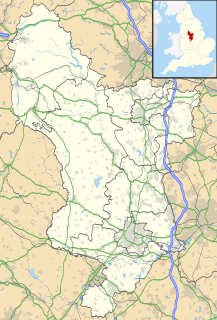 W
WRAF Ashbourne is a former Royal Air Force airfield located approximately 1.5 miles (2.4 km) south-east of the town of Ashbourne, Derbyshire, England.
 W
WThe Colombian Battalion was a Colombian Army Infantry battalion that served with the United Nations Command during the Korean War. The first Colombian military unit to serve in Asia, the Colombian Battalion was attached to the US 7th Infantry Division and 25th Infantry Divisions during the war. The battalion was deployed from 1951 to 1954.
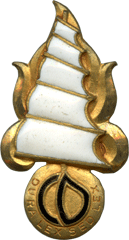 W
WThe Disciplinary Company of the Foreign Regiments in the Far East created on June 1 1946, was the disciplinary company for serious offenders from all Foreign Regiments in the Far East. The main Disciplinary Company of the Foreign Legion (CDLE), which received those sent from Legion regiments garrisoned or operating in Algeria, Morocco, Tunisia, the Levant and Tonkin was dissolved on July 1 1964, the latter was based on rules and regulations set by général Rollet in 1931.
 W
WThe 1st Foreign Parachute Heavy Mortar Company was an ephemeral foreign airborne heavy mortar company of the French Foreign Legion which fought during the First Indochina War at the corps of the French Far East Expeditionary Corps.
 W
WThe Hukbalahap, or Hukbong Laban sa Hapon, was a socialist/communist guerrilla movement formed by the farmers of Central Luzon. They are popularly known as the "Huks". They were originally formed to fight the Japanese, but extended their fight into a rebellion against the Philippine government, known as the Hukbalahap Rebellion, in 1946. It was put down through a series of reforms and military victories by the Philippines' Secretary of National Defense, and later President, Ramon Magsaysay.
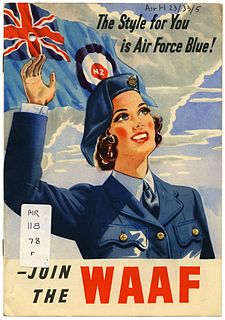 W
WThe Women's Auxiliary Air Force was the female auxiliary of the Royal New Zealand Air Force during the Second World War. Established in 1941, it began with an initial draft of 200 women, reaching a peak strength of about 3,800, with a total of about 4,750 women passing through its ranks, of who more than 100 achieved commissioned officer rank.
 W
WNo. 491 (Maintenance) Squadron was a Royal Australian Air Force (RAAF) squadron that operated during the Korean War and its immediate aftermath. It was unusual in that it was never based in Australia, being formed and dissolved in Japan. The squadron was established in October 1950 as part of No. 91 (Composite) Wing, which administered all RAAF units deployed as part of Australia's involvement in the Korean War. Apart from No. 491 Squadron, these included No. 77 (Fighter) Squadron, No. 30 Communications Unit, and No. 391 (Base) Squadron. No. 77 Squadron was based on the Korean peninsula, while No. 491 Squadron and No. 91 Wing's other components were headquartered at Iwakuni, Japan. The maintenance squadron was responsible for the upkeep of all No. 91 Wing aircraft at Iwakuni, and a section was attached to No. 77 Squadron in South Korea to assist with day-to-day servicing. No. 491 Squadron was disbanded in December 1954.
 W
WSquadron 107 is a squadron of the Israeli Air Force.
 W
WCommando Unit 101 was a special forces unit of the Israeli Defense Forces (IDF), founded and commanded by Ariel Sharon on orders from Prime Minister David Ben-Gurion in August 1953. They were armed with non-standard weapons and tasked with carrying out retribution operations across the state's borders—in particular, establishing small unit maneuvers, activation and insertion tactics.
 W
WThe 5th Vietnamese Parachute Battalion was a French-Vietnamese paratroop battalion formed in Hanoi, French Indochina in 1953.